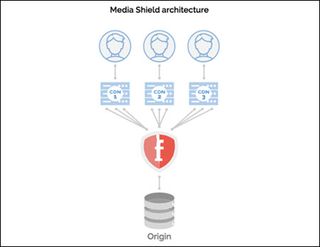Fastly Gets a Fix on Streaming at Scale

The streaming of live and on-demand events and shows has improved steadily in recent years, but those streams still tend to struggle during highly-watched tentpole events.
Of recent note, Yahoo’s Sept. 24 live stream of the Baltimore Ravens-Jacksonville Jaguars National Football League game in London didn’t go off without a hitch, as some users, particularly watching via TV-connected devices, lodged complaints about buffering and blurry images.
Initiatives such as the Streaming Video Alliance’s open caching initiative are taking aim at those scale challenges, but a content delivery network provider is also trying to solve that riddle.
Edge cloud provider Fastly is trying to get a fix on the issue with Media Shield, an offering that is akin to a control element to the streaming infrastructure and caching layer even in scenarios in which video traffic from an OTT service is travelling on multiple CDNs.
Fastly, which competes in the CDN sector with companies such as Limelight Networks and Akamai, is looking beyond “raw delivery” with Media Shield, Lee Chen, its head of strategic partnerships, said. In Chen’s view, that’s the “least interesting” technology challenge CDNs face, he said.
Related: Limelight, Akamai Bury the Hatchet
Instead, Media Shield focuses on providing a consistent quality of experience and quality of service as traffic travels to and from multiple CDN providers, ensuring that there’s a balance in elements such as low latency and quick streaming startup times. It also aims to help providers rely less on origin serves and apply more streaming resources toward the edges of the network.
By managing that from the cloud, Media Shield aims to balance the load among CDN providers and to manage and gain visibility into what’s occurring as if that video is being delivered on one unified streaming infrastructure.
Having that sort of control is becoming more important as more and more video goes online.
Related: Amazon’s First Live NFL Stream Solid, Not Perfect
The use of multi-CDNs is also becoming more the norm. All of the big OTT players have been using multi-CDN strategies for years, but even smaller providers are migrating in that direction, Dan Rayburn, executive vice president for StreamingMedia.com and principal analyst at Frost & Sullivan, said.
“The performance amongst CDNs for video, specifically, is so similar,” he said, adding that it’s become so inexpensive to go with multiple providers that it makes little sense for an OTT player to put all of its traffic on one CDN.
Fastly, whose customers include A+E Networks, Vimeo, Brightcove and Dish Network, isn’t alone with a system that shapes traffic on multiple CDNs.s Third parties such as Cedexis and Touchstream also provide solutions that let partners shift to other providers in real time, Rayburn said. He said Fastly’s launch of Media Shield is an acknowledgement the company won’t be a sole CDN provider to everyone, but it can still play a key role in other ways, given market shifts.
“The reality in the market is that the customers split up traffic, so Fastly is acknowledging this multi- CDN market and making [that approach] easier to use,” Rayburn said.
Multichannel Newsletter
The smarter way to stay on top of the multichannel video marketplace. Sign up below.










